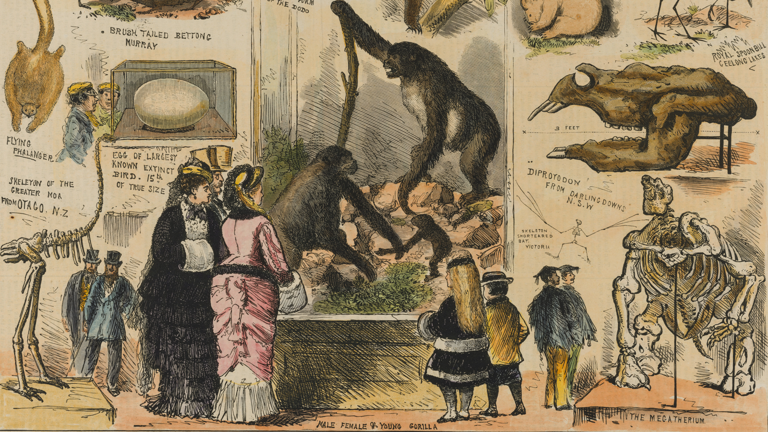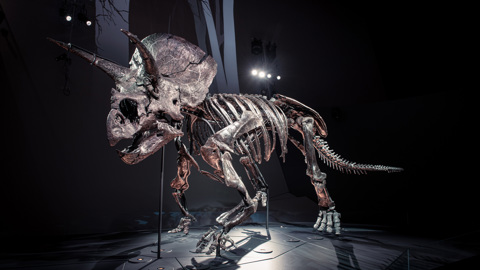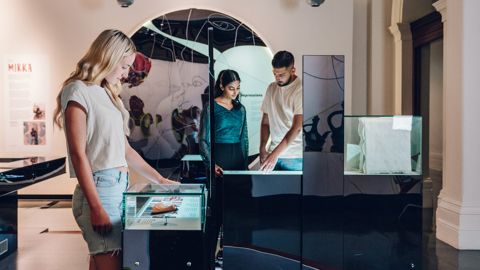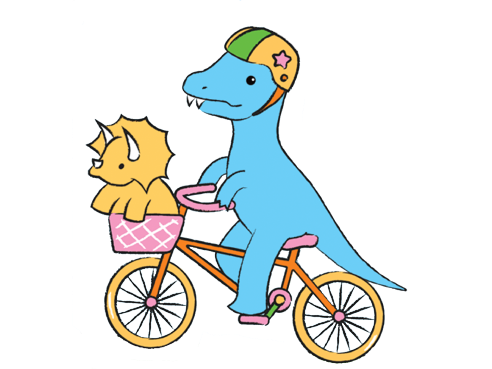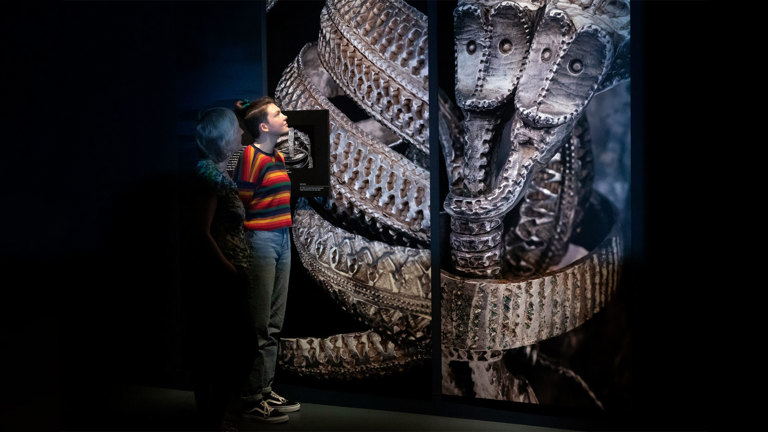
Treasures of the Viking Age: The Galloway Hoard
- What
- Self-directed
- When
-
Terms 3 to 4, Monday 1 September to Friday 12 December
Monday to Friday - Duration
- 45 minutes
Curriculum links & Accessibility & Access Fund - Year level
- Years 7 to 10
- Maximum student numbers
- Maximum 30 students
- Cost
- $9 per student + education service fee
- Booking information
- Bookings 13 11 02
A unique opportunity for history students to gain deeper insight into the Viking Age in this fascinating, once-in-a-lifetime exhibition from National Museums Scotland –Treasures of the Viking Age: The Galloway Hoard.
Buried around AD 900, the Galloway Hoard brings together a stunning variety of materials and treasures from Ireland, the Anglo-Saxon kingdoms, and as far away as Asia. The Hoard transports us back to a critical movement in history: the formation of the political entities we now know as Scotland, England and Ireland, in a time of Viking raids.
Through engaging with the treasures of the Galloway Hoard, students will experience firsthand how primary sources can shift perspectives and understandings of the past. Along with the remarkable objects themselves, the exhibition features ground-breaking research into these treasures and what they reveal about Viking-age Britain.
Students will discover the fascinating details artefacts reveal about the ambitions, conflicts, relationships, and religious beliefs of people from medieval Britain. The different sources of the objects – from nearby in Ireland and the Anglo-Saxon kingdoms, to those from as far as Scandinavia, Rome and down the Silk Roads to Asia – will allow students to explore a world of connections.
This is a self-guided tour for students – supported by an exhibition booklet to deepen their experience.
Students will experience
- A close look at some rare artefacts.
- Deeper insight into a society at a time of transformation across the British Isles.
Students will learn
- About the methods and work of archaeologists, museum curators and conservators.
- How objects have stories and what they can reveal about the past.
- How medieval Europe was connected to the wider known world.
- About the contested nature of history.
- To interpret and analyse material evidence.
Students will be provided
- Exhibition trail / activity booklet to complete within the exhibition and back at school!
Students will need
A pencil for making notes in booklets.
Victorian Curriculum links
History: level 7 to 8
Investigation: Europe and the Mediterranean world (c. 600–1750 CE)
- significant social, cultural, economic, environmental and political continuity and change in the way of life and the roles and relationships of different groups
VC2HH8K19 - causes and consequences of a significant event, development or turning point that contributed to continuity and change
VC2HH8K20 - experiences and perspectives of rulers and ruled, and the interaction between power and/or authority
VC2HH8K21 - historical interpretations of an event, individual, group or institution and its legacies
VC2HH8K23
Historical Concepts and Skills
- develop and use historical questions to inform historical investigations
VC2HH8S01 - explain the features, content and context of historical sources
VC2HH8S03 - analyse the value of sources for use as evidence to explain historical significance, continuity and change, and causes and consequences
VC2HH8S04 - explain the perspectives, beliefs, values and attitudes of people and groups based on evidence from a range of sources
VC2HH8S05 - analyse historical interpretations and debates
VC2HH8S06

